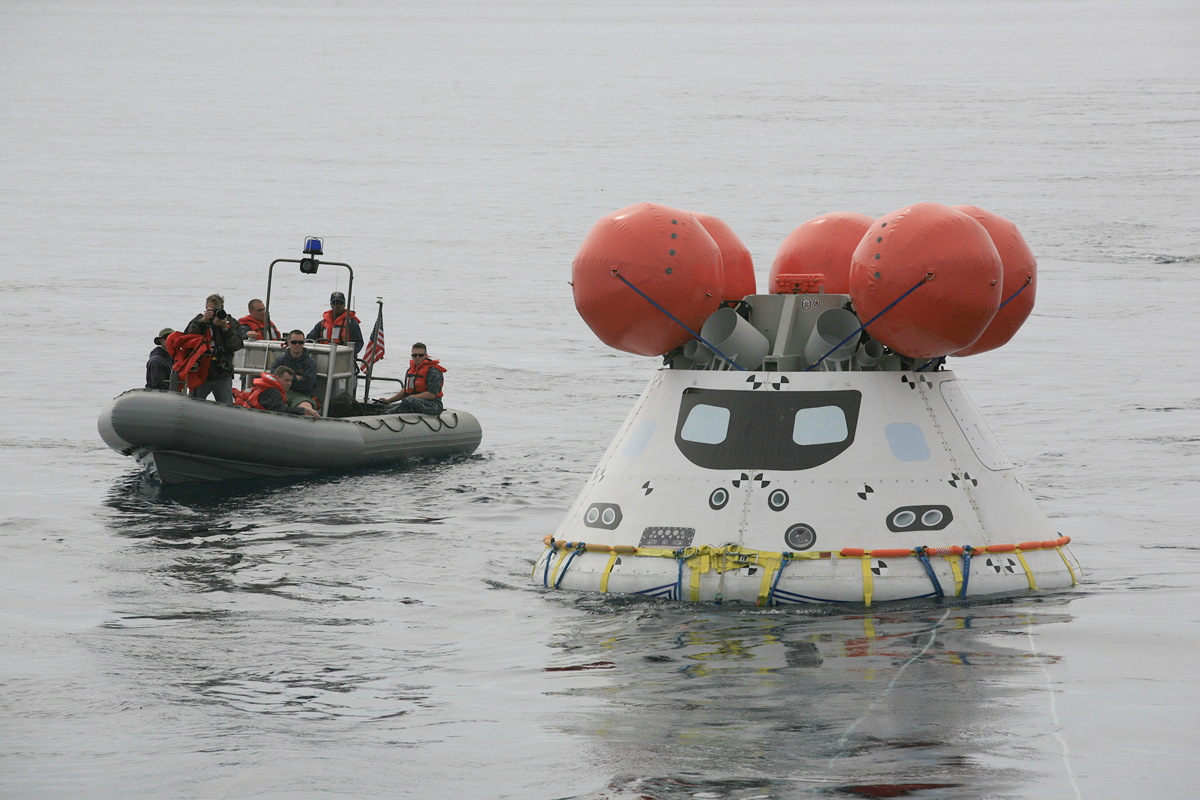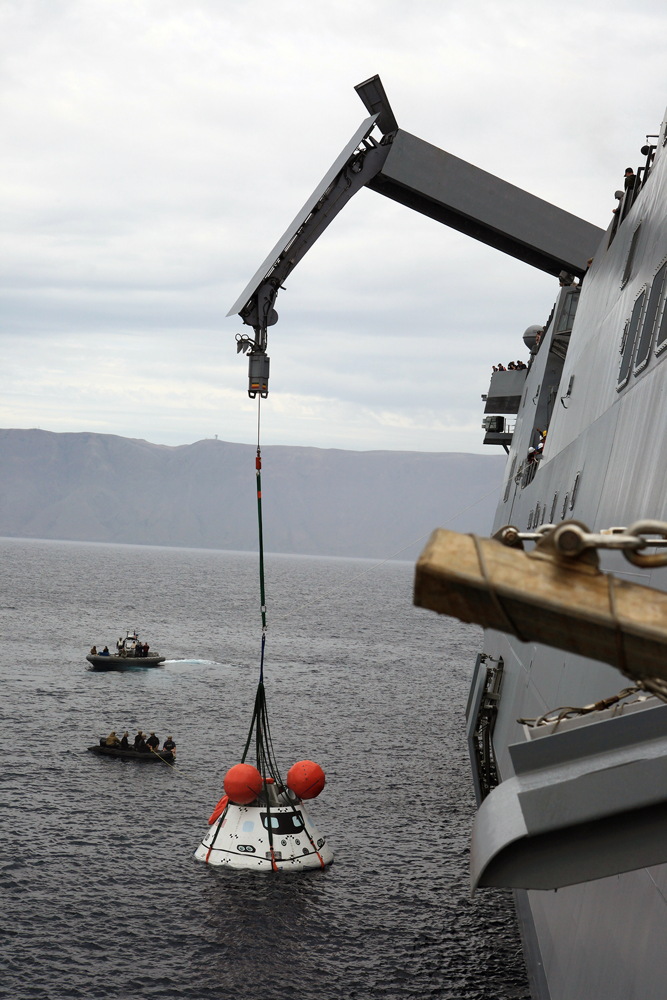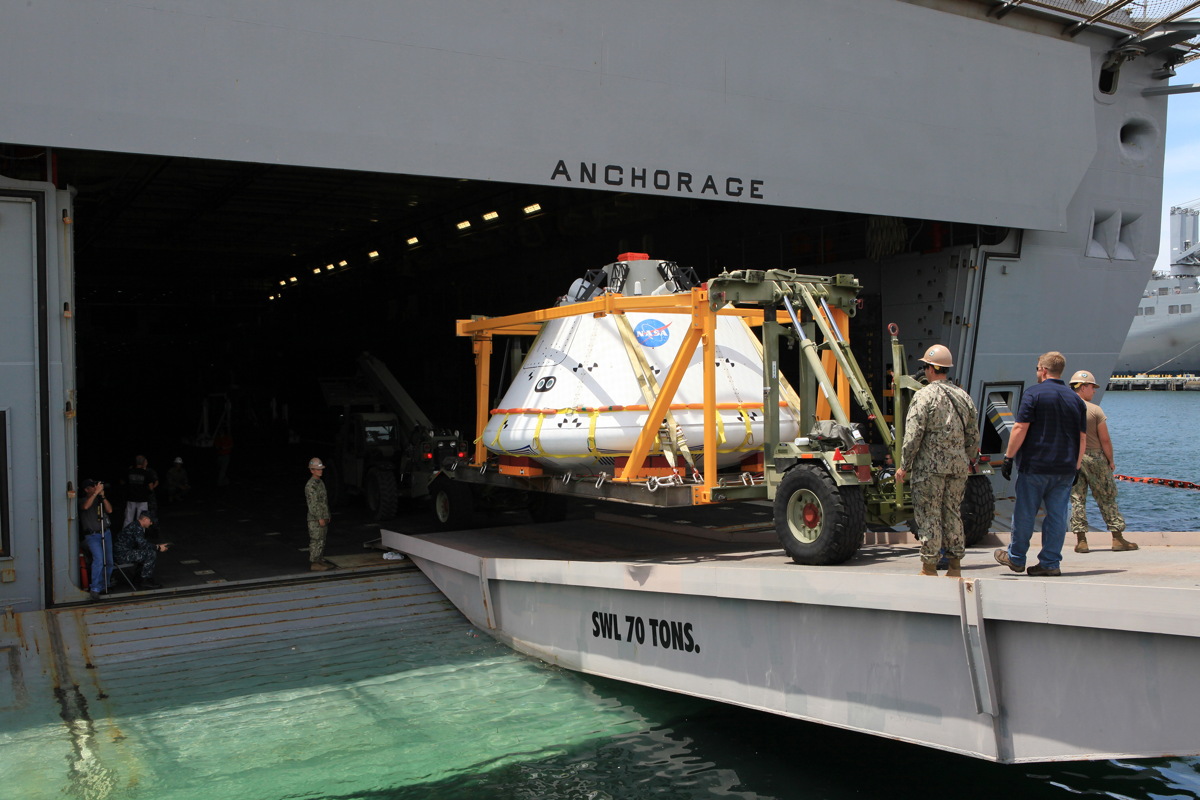The U.S. Navy Just Fished NASA's Orion Spaceship Out of the Pacific (Photos)

Before NASA/s new Orion spacecraft takes off, its splashdown must be perfected. The U.S. Navy just completed the second of two recovery test missions designed to find the best method for hauling space capsule out of its watery landing site in the Pacific Ocean.
The Orion spacecraft's first test flight is currently set for December, when NASA will launch the spacecraft on an unmanned mission. NASA engineers and U.S. Navy personnel have completed two Underway Recovery Test missions to try out several techniques for pulling the spacecraft from its watery landing site.
"We learned a lot about our hardware, gathered good data, and the test objectives were achieved," Mike Generale, NASA recovery operations manager in the Ground Systems Development and Operations Program, said in a statement. "We were able to put Orion out to sea and safely bring it back multiple times." [NASA's Orion Space Capsule Explained (Infographic)]
During the upcoming Orion test flight, NASA will send the spacecraft on a 3,600-mile (5,794 kilometers) unmanned test flight. After barreling back into the Earth's atmosphere at 20,000 mph (32,187 km/h) through blazing temperatures near 4,000 degrees Fahrenheit (2,204 degrees Celsius), the spaceship will splash down in the Pacific Ocean off the coast of California. A U.S. Navy ship will be waiting to meet the spacecraft and pull it out of the water, hence the recent rehearsal by NASA and the military.
The first Orion recovery test this year occured in February when engineers tried out a well deck recovery technique that winched the spacecraft up from the seabed. In the August recovery test, the team tried out an onboard crane designed to lift the spacecraft out of the water.
Orion is designed to send astronauts to deep-space destinations that have yet to be explored by humans, like an asteroid and eventually Mars. The spacecraft is designed to be able to sustain crew members during long-term space travel and will have an emergency abort function. Orion will launch from Cape Canaveral in December for the first test flight called Exploration Flight Test-1. The test flight will ensure the re-entry system and heat shields of the spacecraft are working properly.
Follow Kelly Dickerson on Twitter. Follow us @Spacedotcom, Facebook or Google+. Originally published on Space.com.
Breaking space news, the latest updates on rocket launches, skywatching events and more!

Kelly Dickerson is a staff writer for Live Science and Space.com. She regularly writes about physics, astronomy and environmental issues, as well as general science topics. Kelly is working on a Master of Arts degree at the City University of New York Graduate School of Journalism, and has a Bachelor of Science degree and Bachelor of Arts degree from Berry College. Kelly was a competitive swimmer for 13 years, and dabbles in skimboarding and long-distance running.


